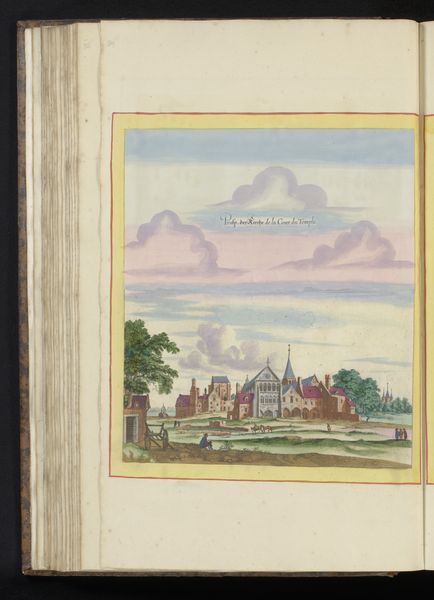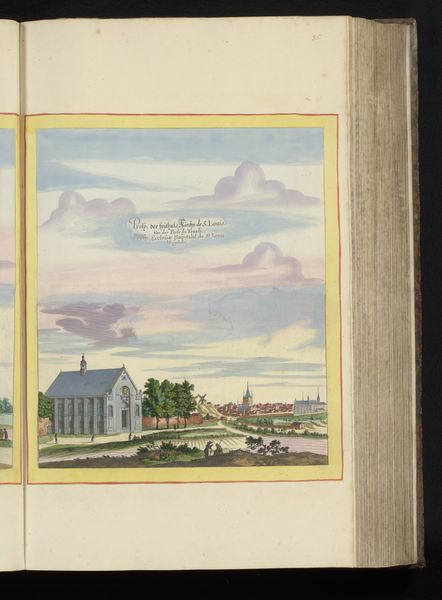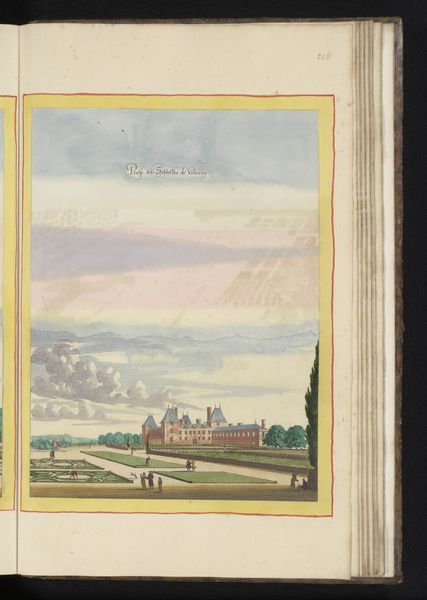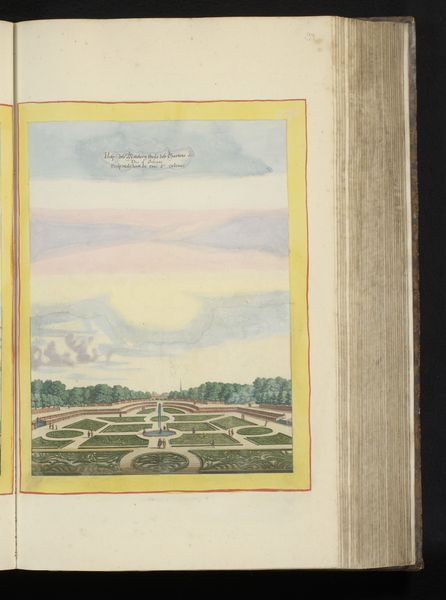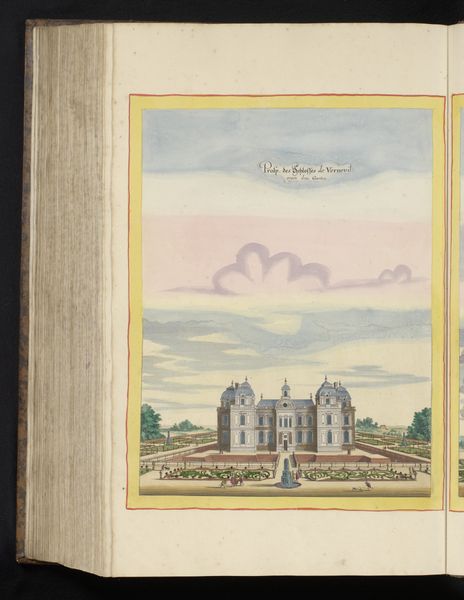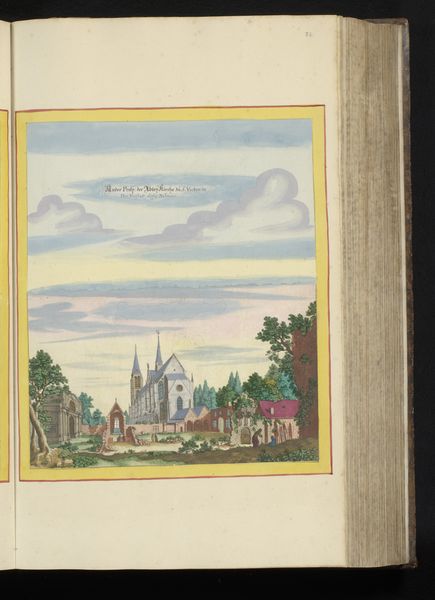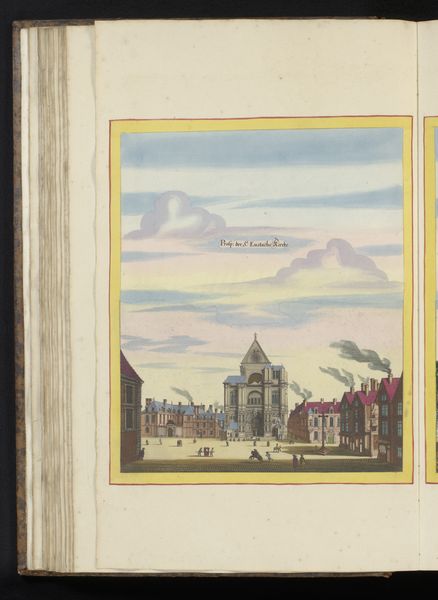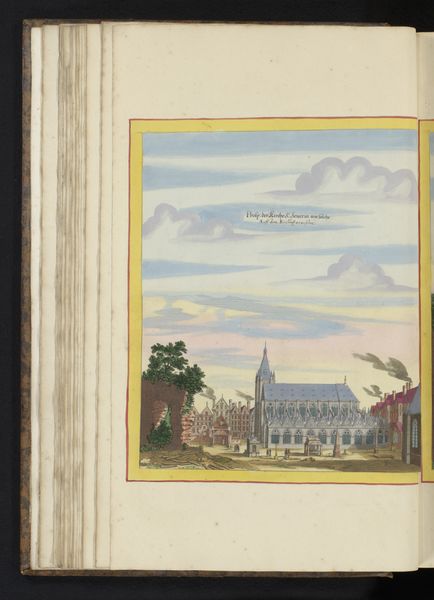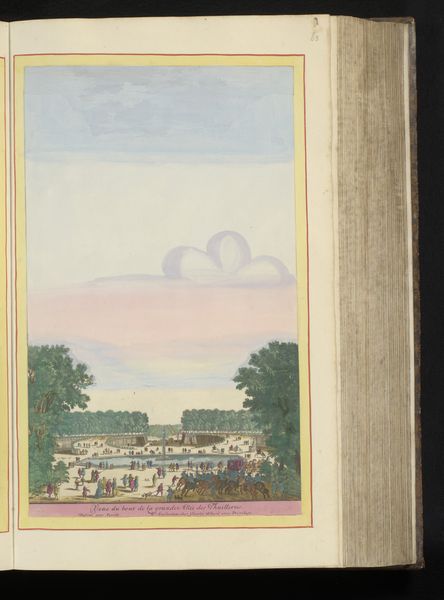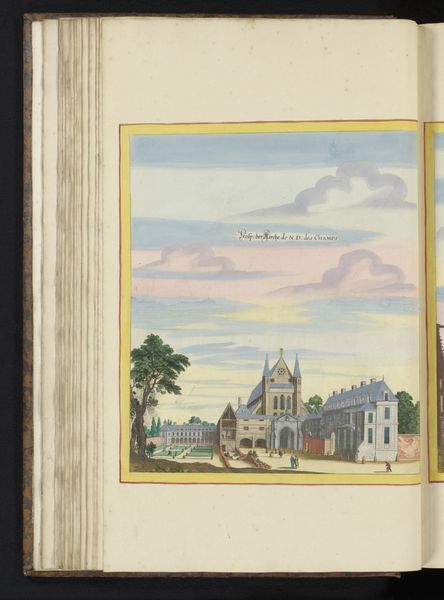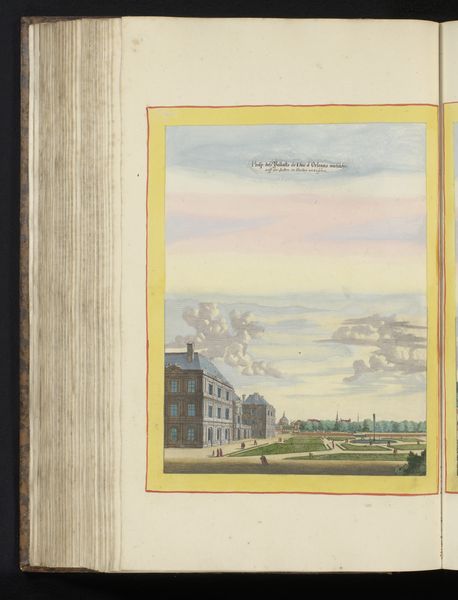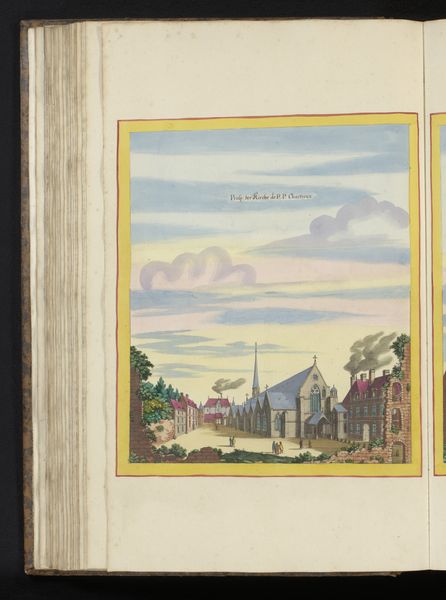
Gezicht op de orangerie en een poort bij Château du Val de Ruel 1655
0:00
0:00
matthausiimerian
Rijksmuseum
painting, watercolor, architecture
#
baroque
#
painting
#
landscape
#
watercolor
#
cityscape
#
architecture
Dimensions: height 374 mm, width 282 mm, height 536 mm, width 330 mm
Copyright: Rijks Museum: Open Domain
Curator: Here we have "View of the Orangery and a Gate at Château du Val de Ruel," a watercolour painting rendered around 1655 by Matthäus Merian the Younger. It’s currently held here at the Rijksmuseum. What leaps out at you? Editor: It's pastel perfection. Like a memory fading into a gentle dream. The tones are so soft. It's airy, light, a touch melancholy, maybe? Like a postcard from a summer long past. Curator: That melancholic aspect might arise from what the chateau represents. Places like Val de Ruel were statements of power, reflections of the owner’s ambitions expressed through symbolic architecture and formally arranged grounds. These landscapes evoke idealized visions, projecting stability. Editor: Absolutely. The architecture itself feels loaded. We have a classical arcade meeting a triumphal arch—symbols that connect back to Roman power. Curator: Exactly, that’s that cultural memory bubbling up. Architects frequently utilized Classical orders to reinforce ideas of power, legitimacy, and order in a newly defined space. Merian captured a specific, idealized worldview embedded in those stones. Editor: And the soft watercolor palette seems almost subversive, a way to defuse the grandiosity. I find the people charmingly miniature. I think the real drama here exists above the horizon. The clouds resemble purple puffs, almost comically placed. The painting seems almost playful in the execution! Curator: Interesting…Perhaps Merian was capturing not just the château itself, but the ephemerality of its moment. Buildings are static, stone by stone, but social and political power…much like watercolor pigment, that’s always shifting and subject to change. Editor: I appreciate how looking closely shifts your perspective on these historical monuments, how they become deeply personal. You discover a narrative much more complex than power, but human presence within that sphere. Curator: Beautifully put. When we engage with art, especially artworks imbued with a potent sense of time and space, the story becomes more than lines on the paper or the strokes on a canvas; It represents how far we have evolved and what still holds strong for us.
Comments
No comments
Be the first to comment and join the conversation on the ultimate creative platform.

